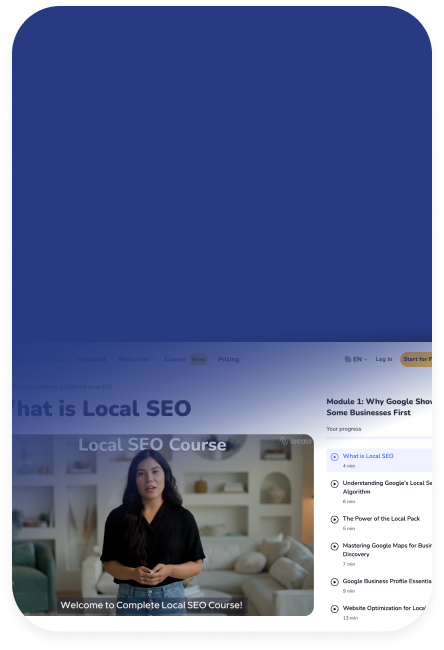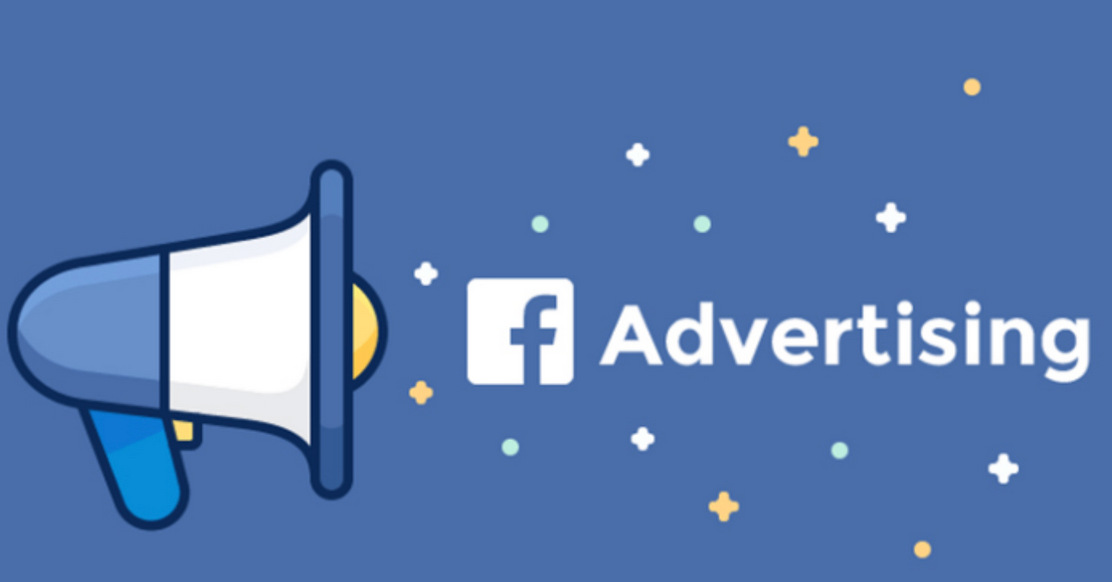
Ready to get more customers calling?
Take FREE Local SEO Course
Available now in English
Facebook Advertising - is a form of digital advertising that uses the Facebook platform to promote products, services or brands to a broad user base. These ads can take a variety of formats, such as sponsored posts, video ads, product carousels or ads in Stories, and are displayed in users’ news feeds, on Messenger, in Instagram Stories and on other Facebook-owned platforms.

Facebook ad types
Facebook ad campaign offers a variety of formats that allow marketers to creatively and effectively reach their target audience. Here are the main ad types available on this platform:
- Image Ads - this is the basic ad type, which consists of a single image and text. Image Ads are simple but effective tools for increasing brand awareness, promoting products or encouraging visitors to a website.
- Video Ads - use dynamic video content to capture the attention of users. Their uses include promoting products, showing instructions, telling a brand story or providing tutorials.
- Carousel Ads - allow several images or videos to be shown in a single ad, with the option of scrolling. Each slide in the carousel can have its own link, which is ideal for showcasing different products, highlighting different features of one product, or telling a sequential story.
- Slideshow Ads - this is a lightweight alternative to video that allows you to create short presentations from a few images, text and sound. This is particularly useful for businesses that want to use the dynamics of video but have limited resources for video production.
- Collection Ads - allow users to browse and purchase products directly from the ad. When users click on the ad, they are taken to a full-screen interface where they can view product details and make a purchase.
- Native and in-article ads (Instant Experience) - are full-screen ads that load instantly when clicked and offer a rich, interactive experience.
- Contact Form Ads (Lead Ads) - specifically designed to facilitate the collection of contact details from potential customers.
Goals of facebook ad campaigns
The effectiveness of advertising manifests itself in:
- Increase brand awareness - Facebook ads can significantly increase brand recognition among a wide audience. Through precise targeting, companies can reach a group of non-standard audiences, resulting in brand awareness and image building.
- Generate leads - Facebook offers tools such as contact form ads (lead ads) that make it easy to collect contact information from potential customers without having to leave the platform.
- Increasing website traffic - Facebook ads can direct users directly to company websites, which is particularly useful for promoting specific products, blog articles or special campaigns.
- Conversions and sales - one of the main goals of Facebook ads is to directly generate sales. Companies use various ad formats to promote their products or services and encourage users to make a purchase.
- User engagement - Facebook is a social platform, so a natural goal of ads can also be to increase user engagement. Effective ad campaigns can be designed to encourage likes, comments, shares or participation in competitions.
- Event promotion - Companies often use Facebook ads to promote events such as webinars, workshops, conferences or local events.
Targeting in Facebook Advertising
Facebook offers advanced targeting options that allow advertisers to reach specific audiences based on demographics, interests, behaviours and other data. These options include:
-
Demographic targeting: selecting your target audience based on age, gender, location, education and other demographic factors.
-
Behavioural targeting: reaching users based on their previous activities, such as online purchases, sites visited or apps used.
-
Retargeting: targeting ads to people who have previously interacted with the brand, visited the advertiser’s website or performed certain actions.
Challenges and limitations
Despite its many advantages, Facebook Advertising also comes with some challenges:
- Algorithm changes: Facebook regularly updates its algorithms, which can affect the effectiveness and reach of ads.
- Competition: high competition for users’ attention can lead to increased advertising costs and make it difficult to achieve good results.
- Privacy issues: increasing user awareness and data privacy regulations may limit the ability to target and personalise ads.
Summary
Facebook Advertising is an advanced advertising platform offering a wide range of targeting tools and options that allow companies to effectively reach their audience. With precision targeting, advertisers can reach specific groups of users based on their demographics, interests and behaviours.
![What is Facebook Advertising - Definition [Marketing Dictionary]](/assets/img/dictionary-background.webp)
